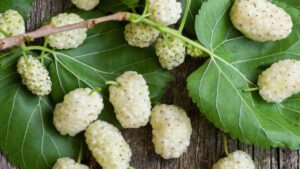Exercise is a powerful lifestyle intervention that improves blood pressure, blood sugar control, insulin sensitivity, cholesterol profile, mood, motivation, cognitive function, and sleep quality.
It can also dramatically lower the risk of heart disease, cancer, and dementia while helping you lose weight and build muscle and bone health.
Healthy centenarians worldwide have one thing in common: movement is a fundamental part of their lives. Exercise is a vital component of healthy aging and can reverse our biological age.
At AVEA, we believe in a holistic approach to healthy aging, including dietary choices, lifestyle practices, quality sleep, supplementation, and exercise.
In this chapter, we will explore the positive biochemical changes induced by exercise and provide a systematic exercise strategy with longevity in mind.
In this article
The Epigenetic Benefits of Exercise for Longevity
Exercise causes epigenetic modifications by changing the chemical tags on our genes, affecting how they are turned on or off in various tissues, including muscle, fat, and the brain.
These modifications can have a range of positive effects on our health and longevity, such as:
- Improved mitochondrial function – modifications in genes that regulate cell energy production, particularly in mitochondria. By improving mitochondrial function, exercise can help us produce more energy, reduce oxidative stress, and slow ageing.
- Enhanced immune function – modifications in genes involved in immune function, leading to improved immune function and reduced inflammation. This can help us fight off infections and reduce the risk of ageing-associated chronic diseases.
- Better brain function – modifications in genes involved in brain function, leading to improved cognitive function, memory, and mood. This can help us maintain our mental abilities as we age and reduce the risk of neurodegenerative diseases like Alzheimer’s.
- Reduced risk of chronic diseases – modifications in genes that regulate inflammation, oxidative stress, and metabolism. This can reduce the risk of chronic diseases like heart disease, diabetes, and cancer, major contributors to premature mortality.
- Slower biological ageing – modifications in genes that regulate ageing, leading to slower biological ageing and increased lifespan. Maintaining a regular exercise routine can extend our healthspan and lifespan.
By promoting healthy aging and reducing disease risk, exercise can help us live longer, healthier lives. These epigenetic modifications can also be long-lasting and may be passed on to our children, further reducing their disease risk.

Epigenetics refers to changes in gene expression that do not involve alterations to the DNA sequence itself. Environmental factors, including exercise, can influence epigenetic changes.
Measure your Fitness and Body Composition
When beginning or significantly changing an exercise programme, some people find measuring their fitness level and body composition helpful.
This can establish a baseline for monitoring progress over time and ensure you are on the right track.
An excellent measure of fitness is VO2 max. It measures the maximum amount of oxygen you can utilise during exercise and is used as an indicator of cardiovascular fitness.
Norwegian researchers developed a reasonably accurate way to predict VO2 max without taking a cardiopulmonary exercise test at a clinic. It’s available here: https://www.worldfitnesslevel.org/ (an online quiz requiring you to know your maximum heart rate, resting pulse, and waist circumference.)
Dual-energy X-ray absorptiometry (DEXA) is considered the gold standard for measuring body composition. This non-invasive medical test provides a detailed assessment of bone density, muscle mass, and body fat percentage. Like VO2 max measurements, DEXA scans establish a baseline for future evaluations.
VO2 max measurements and DEXA scans are available at select sports and health clinics.
Foundational Aerobic Exercise
A reasonable starting goal is a minimum of five aerobic sessions per week of at least thirty minutes at a modest degree of effort.

“Aerobic” refers to an exercise requiring the body to use oxygen to produce energy, such as swimming. The opposite is “anaerobic” exercise, which involves high-intensity activities that do not require oxygen to produce energy, such as high-intensity interval training (HIIT.)
In terms of the type of aerobic exercise to perform, pick what you love. Suggestions include brisk walking, moderate running, dancing, hiking, garden work, swimming, and cycling.
You should exert between 60 and 80 percent of your maximal perceived exertion (PE) for aerobic exercise. PE is when you feel you can no longer continue the exercise due to physical fatigue. This is often referred to as reaching your maximum aerobic capacity or maximum heart rate.
You can still carry on a conversation at this level, but with some difficulty, due to the need for heavier breathing. You may opt to verify levels by wearing a heart rate monitor.
Add High-Intensity Interval Training
When you are ready, you can incorporate brief spurts of more strenuous exercise, such as the aptly named high-intensity interval training (HIIT).
HIIT is a type of exercise that involves short bursts of high-intensity exercise followed by periods of rest or low-intensity exercise.
You’ll perform all-out, high-intensity exercise (such as sprinting, jumping jacks, or burpees) for a set amount of time, followed by a short period of rest or low-intensity exercise (such as walking or jogging in place) before starting the next high-intensity interval.
The length and intensity of the intervals can vary depending on your fitness level and the specific workout routine. HIIT workouts are typically shorter in duration than foundational aerobic workouts but are more intense and can provide similar cardiovascular benefits in a shorter amount of time. The high-intensity period generally is two minutes or less.
A growing body of studies on HIIT suggests that it offers advantages above and beyond foundational aerobic exercise. HIIT has been found to:
- Increase brainpower
- Burn fat
- Improve cardiovascular indicators
- Improve insulin sensitivity
The perceived exertion of HIIT (high-intensity interval training) can be very high, reaching 90 percent or higher. At that level, your breathing is difficult, keeping up a conversation impossible, and your muscles rapidly become fatigued.
If you decide to do HIIT workouts, they should be done in addition to your five 30-plus-minute foundational aerobic periods per week. Alternatively, you can also elect to incorporate your HIIT into your aerobic routines, by interspersing short intervals of exertion and rest, for example, brisk walking and then sprinting.
Resistance Training
We lose muscle mass as we mature – a condition known as sarcopenia. Exercise, specifically resistance exercise, is crucial for maintaining our muscular mass.
Muscle mass and strength is linked with an increased risk for disease and mortality. One reason is that lean muscle is crucial for good metabolism, which regulates lipids and glucose levels.

Sarcopenia is a condition characterized by loss of muscle mass and function, usually due to aging. It is a gradual process that typically begins around age 30 and accelerates after age 60.
Sarcopenia can significantly impact overall health, including increased risk of falls and fractures, decreased mobility, and decreased ability to perform activities of daily living. It can also lead to other health problems like obesity, diabetes, and cardiovascular disease.
Resistance training (strength training) is one effective way to prevent or manage sarcopenia. Resistance or strength training aims to improve physical performance and overall health by challenging the muscles and promoting adaptations such as increased muscle fiber size, strength, and endurance.
Resistance exercise focuses more on focused muscle activity than raising your pulse rate. Examples include:
- Squats: A lower body exercise that targets the quadriceps, hamstrings, and glutes. It can be performed with free weights, a barbell, or a body weight.
- Bench press: An upper body exercise that targets the chest, shoulders, and triceps. It can be performed with free weights, a barbell, or a weight machine.
- Lunges: A lower body exercise that targets the quadriceps, hamstrings, and glutes. It can be performed with free weights, a barbell, or a bodyweight.
- Pull-ups: An upper body exercise that targets the back, shoulders, and biceps. It can be performed using a pull-up bar or assisted machine.
- Shoulder press: An upper body exercise that targets the shoulders and triceps. It can be performed with free weights or a weight machine.
- Deadlifts: A lower body exercise that targets the hamstrings, glutes, and lower back. It can be performed with free weights or a barbell.
- Bicep curls: An upper body exercise that targets the biceps. It can be performed with free weights, a barbell, or a weight machine.
- Push-ups: A compound exercise that targets the chest, shoulders, and triceps. It can be performed with body weight or using variations such as incline or decline push-ups.
- Leg press: A lower body exercise that targets the quadriceps, hamstrings, and glutes. It can be performed using a weight machine.
- Plank: A core exercise that targets the abs, back, and shoulders. It can be performed using body weight.
A qualified trainer can assist you in creating a resistance training program appropriate for your needs and body.
Hormesis and the U-Curve of Exercise
Hormesis is a biological phenomenon that describes how low doses of stress or toxins can stimulate adaptive responses in cells and organisms, leading to improved health and longevity.
This concept has been applied to exercise, where moderate levels of physical stress can promote beneficial adaptations and improvements in health. The idea is that there is an optimal level of physical activity for promoting health and reducing the risk of chronic diseases such as cardiovascular disease, diabetes, and cancer.
For example, weight lifting is known to cause microtears in the muscle that the body then knits back together to make the muscle bigger and stronger.
There’s a similar process within our cells – exercise causes a temporary increase in mitochondrial free radicals. Free radicals are destructive molecules that induce a hormetic response. Assuming that your antioxidant system is sufficient, it will counter them, drenching your mitochondria in potent antioxidants.
However, hormetic stressors, including exercise, have a U curve of benefit. According to a 2018 study, top Polish athletes, particularly those who compete in power sports like professional weightlifting, had substantially older biological ages than healthy controls with comparable age.
Too extreme exercise breaks the body down in greater amounts than it can recover from. This suggests a sweet spot for exercise, where the benefits are maximized and the risks are minimized.
The optimal intensity and duration level will vary depending on your specific factors, such as age, fitness level, and health status.
Key Action Steps Summary
For a balanced exercise program that promotes longevity, follow these practical steps:
- Perform at least five days of aerobic exercise per week, with each session lasting a minimum of 30 minutes at a moderate level of exertion.
- Include high-intensity interval training (HIIT) in your routine, either by adding HIIT workouts 1-2 times per week or incorporating brief periods of more strenuous exercise into your aerobic sessions.
- Incorporate resistance training 2-3 days per week, focusing on exercises that challenge major muscle groups.
Take the Right Supplements
Most of us regularly use supplements. Yet most of us looking to live longer and healthier are not taking the right supplements.
It’s unsurprising, however, given the growing number of supplements ava…









